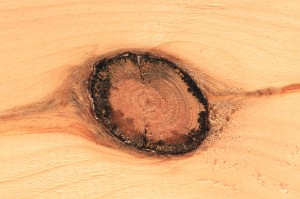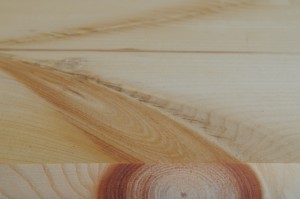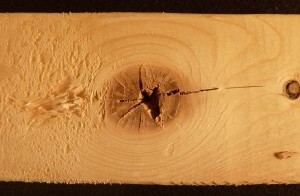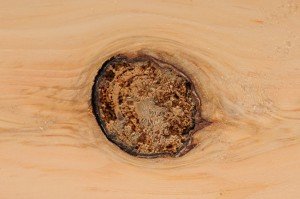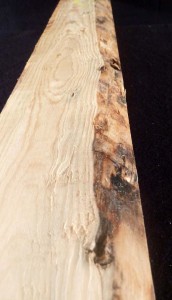A knot is a portion of a branch or limb that has become incorporated in a piece of lumber. Knots are classified as to form size, quality, and occurrence. [Standard Grading Rules for Northeastern Lumber para. 718.0]
SPF Characteristics 101: Knots and Wane
In Characteristics 101, you will learn all about knots in lumber including the various type of knots that appear within the Spruce-Pine-Fir species important to grading.
Syllabus
SPF 101: What is a Knot?
SPF 101: Encased Knot
SPF 101: Spike Knot
SPF 101: Edge Knot
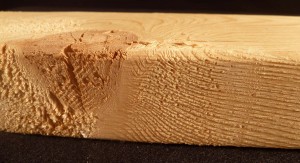
An Edge Knot is any knot that visibly occupies 50% or more of a narrow face (1/2 the thickness), or the knot visibly displaces wood extending from one narrow face to the opposite narrow face. (The same knot is visible on both narrow faces). Knots visible on all four faces are considered Edge Knots.
Note: In cases where there is not a defined “narrow face” such as a 4×4, the narrow faces are determined at the grader and/or inspector’s discretion.
Additional instructions regarding Edge Knots and their application in the grading process will be discussed in SPF Level 200 Courseware.
SPF 101: Centerline Knot
SPF 101: Elsewhere Knot
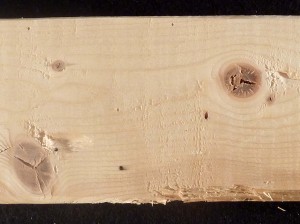
An Elsewhere Knot is any knot in which the center of its displacement (Pith-Center):
- is not located true to the centerline of the piece of lumber, and
- the knot does not visibly occupy 50% or greater of a narrow face, and
- the knot is not occupying both narrow faces.
Additional instructions regarding Elsewhere Knots and their application in the grading process will be discussed in SPF Level 200 Courseware.
SPF 101: Sound Knot
A Sound Knot contains no decay. [Standard Grading Rules for Northeastern Lumber para. 718.0 (j)]
SPF 101: Pith Knot
A Pith Knot is sound in all respects except it contains a pith hole not over 1/4″ in diameter. [Standard Grading Rules for Northeastern Lumber para. 718 (k)]
SPF 101: Unsound Knot
SPF 101: Tight, Loose, Fixed, and Firm Knots
Tight Knot – a knot so fixed by growth, shape or position that it retains its place in the piece. [Standard Grading Rules for Northeastern Lumber para. 718.0 (o)].
Loose Knot – a knot not held tightly in place by growth, shape or position. [Standard Grading Rules for Northeastern Lumber para. 718.0 (s)].
Fixed Knot – a knot that will retain its place in dry lumber under ordinary circumstances, but is movable under pressure (commonly referred to as a clicker) though not easily pushed out. [Standard Grading Rules for Northeastern Lumber para. 718.0 (t)]. These are commonly referred to as “a clicker.”
Firm Knot – a knot that is solid across its face, but contains incipient decay. [Standard Grading Rules for Northeastern Lumber para. 718.0 (n)]

